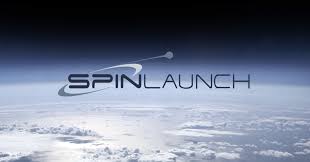Up to this point in the evolution of human space launch systems, the best we a have been able to do is to put payloads on huge tanks of propellant and blast our way to orbit. Over the years, a variety of different types systems for getting payloads to orbit have been proposed.
SpinLaunch is a new Silicon Valley company that says it has raised forty million dollars from investors to create a space catapult that they say will be ready by 2022. The company was founded in 2015 by Jonathan Yaney who serves as the CEO. Their funding includes a new thirty-five-million-dollar Series A funding round from an investment syndicated that includes Airbus Ventures, GV (formerly Google Ventures) and Kleiner Perkins. Other investors include Lauder Partners, ATW Partners, Bolt and Starlight Ventures. SpinLaunch intends to use the money to scale up their staff and technology.
The new launch system uses electricity to power the kinetic launch system. The payload is spun up to hypersonic speeds of 3000 miles per hour in a centrifuge and then release to fly into orbit on the momentum. The CEO said, “Since the dawn of space exploration, rockets have been the only way to access space. Yet in 70 years, the technology has only made small incremental advances. To truly commercialize and industrialize space, we need 10x tech improvement.” “Applying the initial performance boost from a terrestrial-based launch platform enables us to lower the cost by orders of magnitude and launch many times per day.” The system could also be used to impart some of the momentum needed to launch a payload with rockets attached.
SpinLaunch considered four different states as possible launch sites in the U.S. They have not officially released the names of the states they considered. Past statements by the company suggest that they were considering Hawaii. A bill was proposed in the Hawaiian state senate for a twenty-five-million-dollar bond issue to help SpinLaunch with “constructing a portion of its electrical small satellite launch system”. They hope to get construction contracts and jobs but there is local resistance to the bill. Alaska, Florida and California also have been mentioned in past statements made by company representatives.
A general partner of Kleiner Perkins stated that he and his fellow investors were “very intrigued” by the idea that it may be possible to get payloads to orbit without the need to rely traditional chemical fueled rockets to get to orbit. He said, “SpinLaunch can be powered by renewable energy sources such as solar and wind, thereby eliminating the use of toxic and dangerous rocket fuels. SpinLaunch’s unique and proprietary approach to place satellites into low Earth orbit is not only highly cost-efficient, but also safe and green.”
Flinging a payload into orbit with some sort of catapult or gun has been a staple of science fiction for over a hundred and fifty years. NASA has studied the use of linear rail launchers to give a scramjet-equipped plane a starting boost. Any such catapult would have to generate enormous force to throw a payload into orbit. It may be difficult of successfully design the aerodynamics for a such payload launched from a catapult.
